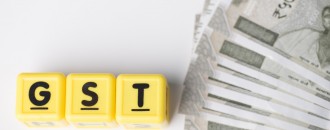
Changes in the duty drawback scheme appreciated by the industry
by Karan Talwar, Partner, Lakshmikumaran and Sridharan
Under All Industry Drawback scheme, the rate of drawback is computed by taking into account average duty and service tax incidence across the country in the manufacturing or processing of export goods. As both customs and excise duty rates are tweaked every year,the government revises the AIR drawback rates once a year based on the data provided by the various industries associations. This year, the government has issued a revised drawback schedule on 31.10.2016 which would be effective from 15.11.2016.
In the new drawback schedule, specific drawback rates have been provided for goods manufactured by hand such as articles of natural cork, basketwork, wickerwork and Artistic and Decorative crafted stone products. Similarly, certain entries have been expanded for dispute prevention or enhanced simplification such as description for the product viz., rice is changed as “Rice, packed in plastic bags including bags constructed of a laminate of plastic with paper and/or aluminum, of more than 5 Kg and up to 10 Kg net weight”from earlier description viz., “Rice, packed in PP/HDPE bags, of up to 10 Kg net weight”.This will enable the exporters to claim drawback even if they export rice in master pack consisting of smaller 6 kg. bags.
Further, there are certain new products whose description has been added in the new drawback schedule such as surmi fish paste, kurta and salwar, etc. Specific rates have been provided for such goods. It is relevant to note here that products are being added by the Government based on the representations made by the industry as the drawback schedule provides only limited products and aligned up to 4 digit level with customs tariff.
The Government of India has increased the drawback rate from 3.67% to 4.7% for certain types of motor cars. Similarly, drawback rate has also been increased up to 9.9% for certain textile articles such as trousers of man-made fibers, dresses / frocks etc. This increased rate will benefit the exporters of motor cars and textiles to recoup the duties suffered on inputs and input services used by them. Further, the Government has reduced the drawback rate for certain types of electrical apparatuses such as switches or electrical circuits from 11% to 10.3%.
It is significant to note that this year, the rate of drawback with respect to products for which only customs duty incidence is granted as drawback, has been reduced from 1.9% to 1.5% and from 1.4% to 1.1%, as the case may be. This may adversely affect the export competitiveness of those exporters and also run contrary to present Governments ’Make In India’ Policy. However, the government has extended the tenure of drawback committee so that exporters of products whose rates have been reduced to 1.1%/1.5% can represent with full data for providing higher residuary rates. Therefore, concerned exporters should approach the government immediately in this regard.
Further, the Rule 8(1) of Customs, Central Excise Duties & Service Tax Drawback Rules, 1995 has been deleted. As a result, exports can claim drawback even if the drawback is less than 1% of F.O.B. value of exports. This change would be useful to small exporters.
In line with the provisions under Foreign Trade Policy 2015-20, the Government has provided alternative AIRs on garment exports made against Special Advance Authorisation. This will enable the garment exporters to claim drawback accordingly.
Overall the changes appear to be appreciated by the industry in which the duty drawback rates have been increased. The measures to simplify and reduce disputes are also welcome.






 to success.
to success.